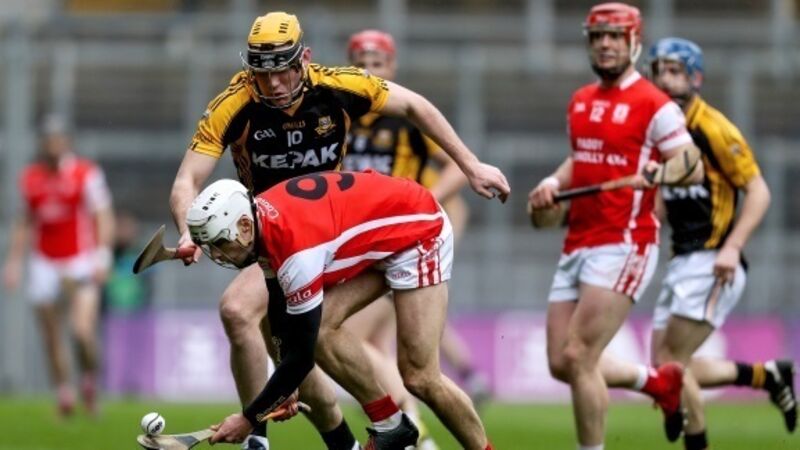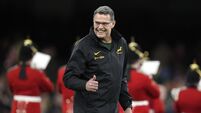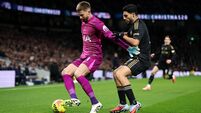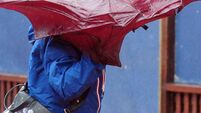Comparing is a talent in itself

What caught my ear about the references to the Cuala midfielder were the comparisons. There weren’t many made. The Kerry native’s three points from play were quality scores — and notched when the game was in the melting pot — while his work rate was outstanding all through.
I wondered, though, if the fact he’s a native of the Kingdom meant some observers struggled to find a player who’d make for an obvious comparison: “He’s like another Jerry O’Connor/Derek Lyng/Jamie Barron.” Nothing.
This turned my attention off to the side and to a book on the nightstand at present, The Undoing Project by Michael Lewis. Anyone who reads this column regularly knows that Lewis’s work is often cited here, so this is hardly a surprise.
His latest is about the creation of the field of behavioural economics, but don’t let that scare you off. It’s also the tale of the two geniuses who did the creating, Amos Tversky and Danny Kahneman, and if that doesn’t convince you, it begins with a lengthy discussion of basketball scouting.
IThis is because it turns out that behavioural economics is a fancy way of referring to decision-making, and in sport, as in most fields of human activity, decisions are made for all sorts of irrational reasons. Even when the decision-makers think they’re working rationally.
The central figure in Lewis’s first chapter is Daryl Morey, general manager of the NBA team the Houston Rockets, who breaks down his own irrationality in player selection, his own biases and prejudices.
More owns up to passing on Jeremy Lin, for instance, because of his own bias against the perceived lack of athleticism of Asian players — even though the hard data showed Lin’s first two steps, when measured, were significantly quicker than other players’.
More troubling for Morey professionally — but also for just about everybody who evaluates players for either fun or profit — was confirmation bias.
“A scout watching a player tended to form a near-instant impression,” writes Lewis, “around which all data tended to organise itself.”
That’s confirmation bias, which reveals itself, Morey added, in scouts rationalising their favourite prospects: “If you don’t like a prospect, you say he has no position. If you like him, you say he’s multipositional. If you like a player, you compare his body to someone good. If you don’t like him, you compare him to someone who sucks.”
Everyone is guilty of this, of course. You fall in love a little bit with a player’s ability and when it doesn’t go right on a given day, well, that’s just a day it didn’t go right for him rather than the exposure of a particular flaw in his game. Hands up if you’ve never done that. Further complicating the picture are other factors such as something behavioural economists call the endowment effect, which is when you overvalue a player simply because he’s on your team.
(Far be it from this reader to point out that you have a naturally stronger attachment to ‘your own’ player but Lewis’s point relates more to buying and selling professional athletes.)
Where does Darragh O’Connell come into this? I wondered if the lack of comparisons when praising his display related to the fact that he was from Kerry. Or to the fact that the obvious comparison could have been made with one of Friday’s opponents, that O’Connell had given a Tony Kelly-like performance. And whether Kelly’s singular hard-running, smooth-striking style is seen unconsciously as something other players can’t replicate.
The rest of Lewis’s book is equally good, but that first chapter will make you look at how you look at sport differently. Much like Cuala’s win last Friday has, for all sorts of reasons.
He spoke softly but carried a big stick
A reader got in touch last week about the late Michael Maher, Tipperary icon and charter member of Hell’s Kitchen.
Said reader told me that Maher was a quiet man on and off the field, but his infrequent contributions in the Tipperary dressing-room carried a great deal of weight.
One newcomer to the county side was surprised in the dressing-room in Croke Park when he was included in the team which was called out by the selectors: he had expected to ride the bench for the day, not to be promoted to the starting line-up.
Maher noticed. He had a quick word with the youngster, asking if he’d played in the Dublin venue before. It being the time of Tipperary’s pomp, the new man had figured in a couple of All-Ireland minor finals, as it happened.
“You’ll be grand,” said Maher, calming the nerves of the new man, the quiet encouragement all the more resonant coming from the man in the number three jersey.
He spoke softly and he carried a big stick.
Sage words on how to put the muscle on
I see Arnold Schwarzenegger is in the news again, this time for a bit of a spat with Donald Trump on Twitter.
Over the weekend I came across a recent interview with Arnold in which, among the commitments to environmental awareness and swiftly-processed regrets over past mistakes (such as having a child with the family maid), was some pretty solid advice on weight-lifting.
Specifically, to start with heavy weights and to use lower weights as you go on and on with your reps (feel free to say ‘Do you even lift, bro?’ at any point). The great man broke it down even further: “You’re basically shredding the muscles and they don’t know what to do. They have no choice except to panic and grow bigger.”
Putting away — with some effort — a mental picture of muscles shrieking in fear, I note that a) you can’t read that sentence without mouthing the words in a faux-Arnoldian Teuotonic drawl and b) that this year Mr Schwarzenegger will be 70 years of age. Seventy.
How close is too close to the action?
Annals of future sports experience, part 536: the Los Angeles Clippers are looking into ways to let the fan at home experience a game the way the player experiences it, simply by using software to broadcast his point of view.
Which begs the question, at what point is it simply going to be a matter of sports teams facing each other with some lightweight software on their clothing - and not a spectator in sight?
And what’s going to happen to the stadia?









